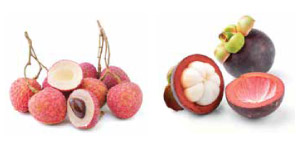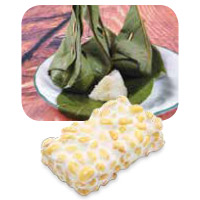The adage ‘You are what you eat’ is closer to the truth than you might think. Gut health is important to your overall well-being. In fact, it can be said that your gut is your second brain. Your gut health is closely connected to your digestive, immune, endocrine, circulatory, and central nervous systems and in turn, can affect your physical and mental health.
One major factor that determines your gut health is the gut microbiota, which is the diverse populations of microorganisms that can be found in your intestine. It is vital to keep the gut microbiota in balance. Imbalance of the gut microbiota happens when the population, diversity, and richness of good and bad bacteria in your gut deviate from the normal ratio, causing disruption and damage to the mucosal layer of your gastrointestinal tract. This will negatively affect your gut health, and consequently your mind and body.
To keep your gut healthy, it is necessary to have a healthy lifestyle and consume a balanced diet. A well-balanced, moderate, and varied diet is essential in keeping your gut healthy. Also, your gut health can be maintained by practising good habits, like regular exercise and enough sleep, and avoiding bad habits, like drinking excessive alcohol and overuse of antibiotics. Apart from that, there are also certain foods that can help to balance the ratio of good and bad gut microbiota, such as probiotics, prebiotics, and fibre. Probiotics are live microorganisms that when consumed, can have a certain health benefit to the host. They can be consumed in the form of health supplements, prescribed medicinal products, or natural food products, like yoghurt and kimchi. When your gut microbiota population is not in balance, for example after an episode of diarrhoea and after treatment with antibiotics, probiotics can be consumed to restore the normal ratio of good and bad microbiota in your gut.
Learn about probiotics!
There are many different species of gut microbiota that can be classified as probiotics, consisting of bacteria and yeasts. In fact, your body contains trillions of bacteria, viruses and fungi, and about 400 different types of probiotic bacteria. Some of the well-known species of probiotics are described below.
Lactobacillus is the largest group of probiotic bacteria in the intestines. There are more than 50 species of lactobacilli, such as L. acidophilus, L. rhamnosus GG, and L. bulgaricus. It can be naturally found in the digestive, urinary, and genital systems, and also in natural foods and supplements. Lactobacillus can potentially be used to prevent or treat acute diarrhoea, also termed acute gastroenteritis which is most commonly due to viral infection; irritable bowel syndrome (IBS); urinary tract infections (UTIs); vaginal yeast infections; common cold; skin disorders; viral respiratory infections in children, and also to reduce lactose intolerance and cholesterol levels.
Bifidobacterium is comprised of approximately 30 different species, such as B. bifidum, B. lactis, and B. longum. It is one of the first bacterial species to grow in babies’ intestines, especially in breastfed infants, and can help digest breast milk. Breastfeeding can help develop babies’ gut microbiota, and children who are breastfed for at least six months are found to have more Bifidobacteria than those who are bottle-fed. Bifidobacterium, similar to Lactobacillus, is also used to help prevent or treat various gut conditions, infections, and skin problems.
Streptococcus thermophilus, which can be found in our colon, produces a large quantity of lactase that can break down lactose in milk to lactic acid, and is widely utilised in the production of yoghurt and cheese. Other species of the same Streptococcus genus, like S. pneumoniae, may be pathogenic, but S. thermophilus has been proven to be safe as a probiotic. Its optimal growth temperature is also in a range that is suitable for our gut microbiota. It can also improve digestion, enhance immunity, and help with other health problems.
Saccharomyces boulardii is different from the previously-mentioned probiotics. S. boulardii is a close relative of S. cerevisiae, also known as baker’s yeast. However, it has a higher optimal growth temperature at 37°C and better survival at acidic pH, enabling it to reach the colon in an active state. It also does not need refrigeration. As S. boulardii is a yeast species, it is not affected by antibiotics, which only target bacteria. Thus, it is suitable for restoring gut microbiota balance after treatment with antibiotics. That is why it is especially useful for treating acute diarrhoeal illness and antibiotic-associated diarrhoea. S. boulardii may be found in fermented food, such as kefir or kombucha, which has a combination of yeast and bacterial probiotics.
Do you know?
Saccharomyces boulardii was found in the early 1920s by a French microbiologist, Henry Boulard, when he observed that people in Indochina who drank a special concoction made from the skin of lychee and mangosteen did not develop diarrhoea and other symptoms of cholera during an outbreak. This strain was named after him upon his discovery and is commonly sold as an anti-diarrhoeal medication.

Probiotics are an important part of our diet to keep the gut healthy. Other than the food mentioned above, we can also get our probiotics from traditional fermented foods like raw tempeh and tapai. Probiotics can also be used to prevent or reduce the symptoms of various gut disorders such as constipation, diarrhoea, or bloating as in irritable bowel syndrome, acute diarrhoea illness, antibiotic-associated diarrhoea, and potentially many other conditions. However, each probiotic strain is unique whereby specific strains are more effective in treating certain conditions, just as how an individual is identified by fingerprints. It is essential to consult your doctor to find the most suitable probiotic for your needs.







Comments